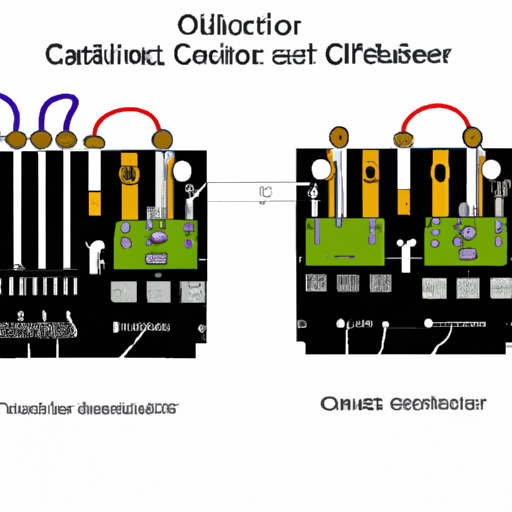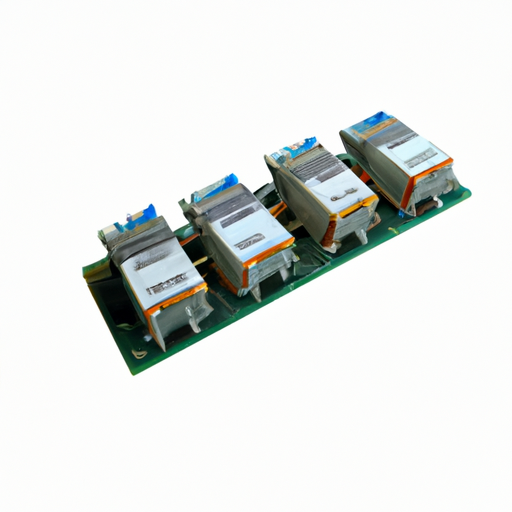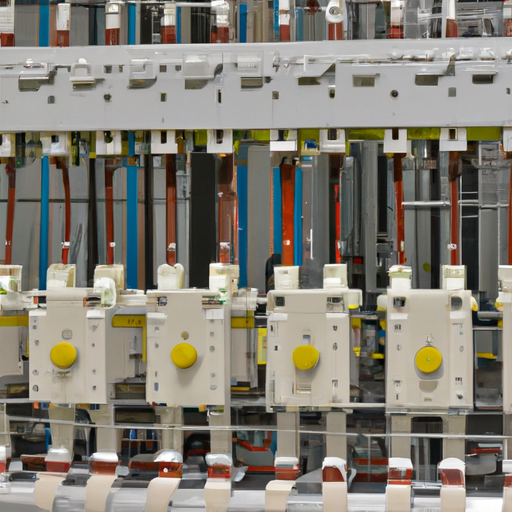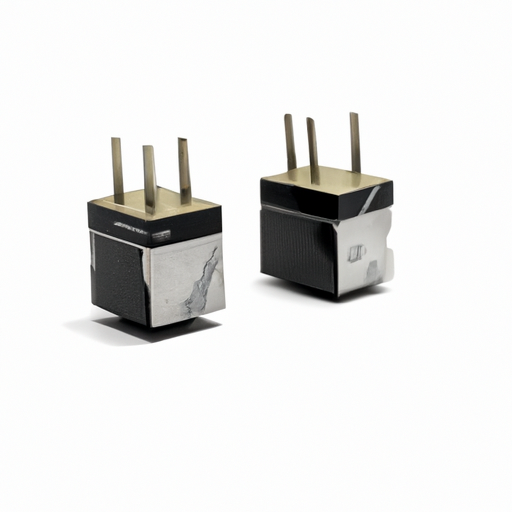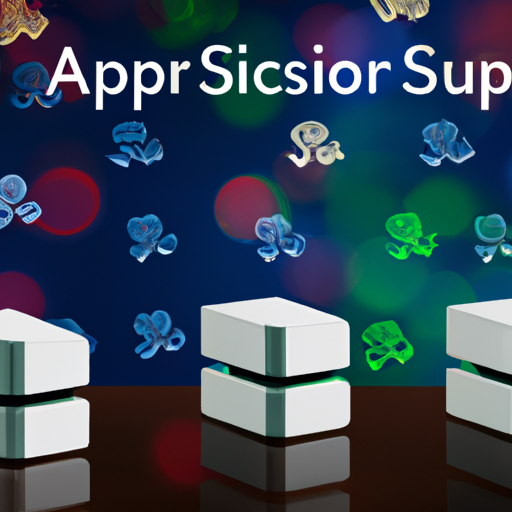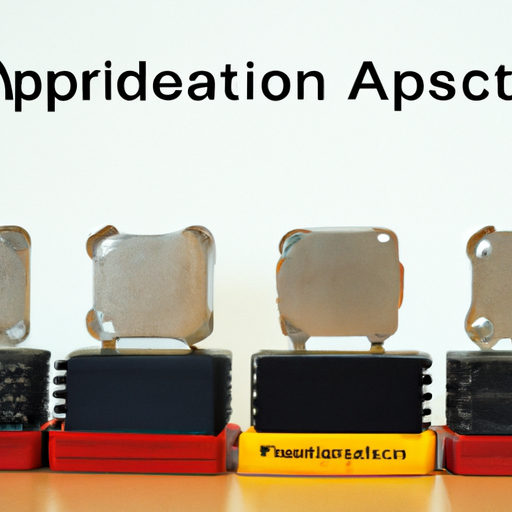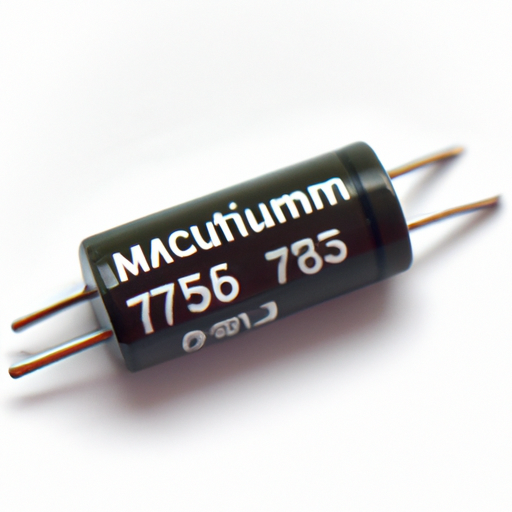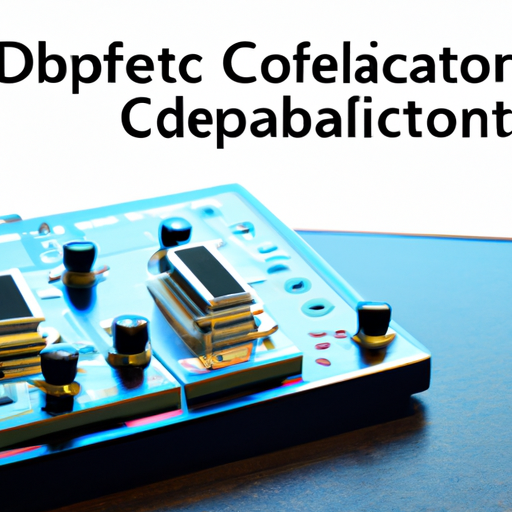
Application Development in Programmable Oscillators for CFR-50JB-52-1K6: Key Technologies and Success StoriesProgrammable oscillators, such as the CFR-50JB-52-1K6, are essential components in a wide range of applications, including telecommunications, consumer electronics, and industrial systems. These oscillators offer precise frequency generation and can be programmed to meet specific requirements, making them versatile for various use cases. Below are some key technologies and success stories related to the application development of programmable oscillators like the CFR-50JB-52-1K6.
Key Technologies1. Digital Frequency Synthesis2. Microcontroller Integration3. Low Power Consumption4. Temperature Compensation5. User-Friendly Interfaces6. High Frequency Stability1. Telecommunications2. Consumer Electronics3. Industrial Automation4. Medical Devices5. Aerospace and Defense Success Stories ConclusionThe CFR-50JB-52-1K6 and similar programmable oscillators represent significant advancements in frequency generation technology. Their versatility, precision, and adaptability have led to successful implementations across various industries, driving innovation and improving performance in numerous applications. As technology continues to evolve, the role of programmable oscillators is likely to expand, enabling even more sophisticated applications in the future. The ongoing development in this field promises to enhance capabilities in telecommunications, consumer electronics, industrial automation, medical devices, and aerospace, paving the way for new solutions and improved efficiencies.
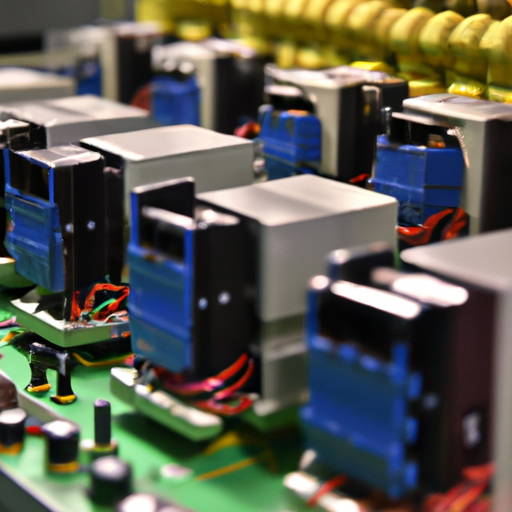
Application Development in Isolation Transformers and Autotransformers: Key Technologies and Success StoriesWhen discussing application development in isolation transformers and autotransformers, particularly in the context of a specific component like the CFR-25JB-52-1R5, it is essential to understand the key technologies involved, their applications, and some success stories that highlight their effectiveness.
Key Technologies1. Isolation Transformers2. Autotransformers3. Step-Up and Step-Down Transformers4. CFR-25JB-52-1R51. Medical Equipment2. Industrial Automation3. Renewable Energy Systems4. Telecommunications Success Stories ConclusionThe development and application of isolation transformers and autotransformers, particularly in conjunction with components like the CFR-25JB-52-1R5, have proven essential across various industries. Their ability to enhance safety, efficiency, and reliability makes them invaluable in modern electrical systems. As technology continues to evolve, the integration of these transformers will likely expand, leading to further innovations and success stories in application development. The ongoing advancements in transformer technology will continue to support the growing demands of various sectors, including healthcare, renewable energy, and telecommunications, ensuring a robust and efficient electrical infrastructure.
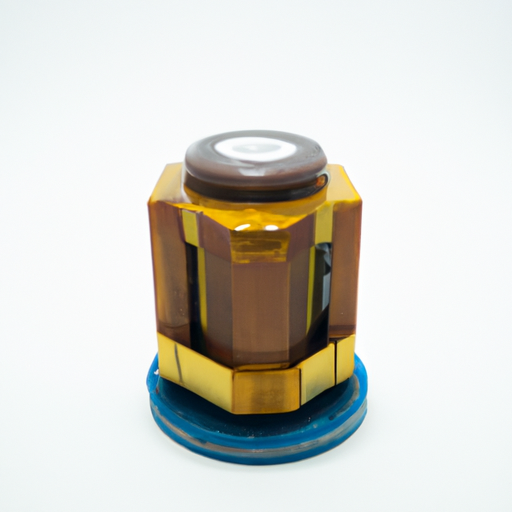
Overview of CFR-25JB-52-1M5 Pulse TransformersThe CFR-25JB-52-1M5 pulse transformer is a specialized component designed to transmit electrical pulses with high fidelity and efficiency. Its design and functionality make it suitable for a wide range of applications, including telecommunications, power electronics, and signal processing. Below, we delve deeper into the core functional technologies and application development cases that highlight the effectiveness of pulse transformers like the CFR-25JB-52-1M5.
Core Functional Technologies1. High-Frequency Operation2. Magnetic Core Materials3. Winding Techniques4. Impedance Matching5. Electrical Isolation1. Telecommunications2. Switching Power Supplies3. Medical Equipment4. Industrial Automation5. Consumer Electronics Application Development Cases ConclusionThe CFR-25JB-52-1M5 pulse transformer exemplifies the advanced technology and versatility of pulse transformers across various applications. By leveraging high-frequency operation, specialized magnetic materials, and effective winding techniques, these transformers play a crucial role in modern electronic systems. Their applications span telecommunications, power supplies, medical devices, industrial automation, and consumer electronics, underscoring their significance in today's technology landscape. As industries continue to evolve, the demand for efficient and reliable pulse transformers like the CFR-25JB-52-1M5 will only grow, driving further innovation and development in this field.
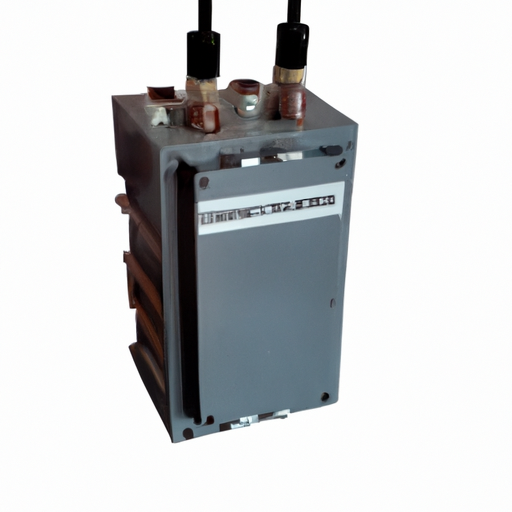
Overview of Power Transformers: CFR-25JB-52-1K5 and BeyondPower transformers, including models like the CFR-25JB-52-1K5, are essential components in electrical power systems, facilitating the transmission and distribution of electricity across various applications. While specific documentation on the CFR-25JB-52-1K5 may be limited, understanding the core technologies and application cases of power transformers provides valuable insights into their functionality and importance.
Core Functional Technologies of Power Transformers1. Magnetic Core Design2. Winding Configuration3. Cooling Systems4. Tap Changers5. Protection Systems1. Renewable Energy Integration2. Smart Grids3. Industrial Applications4. Data Centers5. Electric Vehicle Charging Stations6. Urban Infrastructure Application Development Cases ConclusionPower transformers, including models like the CFR-25JB-52-1K5, are integral to modern electrical systems, enabling efficient power transmission and distribution. Advances in technology—such as improved materials, smart monitoring capabilities, and integration with renewable energy sources—continue to enhance their performance and application scope. As the demand for reliable and efficient power solutions grows, the development of innovative transformer technologies will remain a key focus in the energy sector, ensuring that power transformers meet the evolving needs of the global energy landscape.
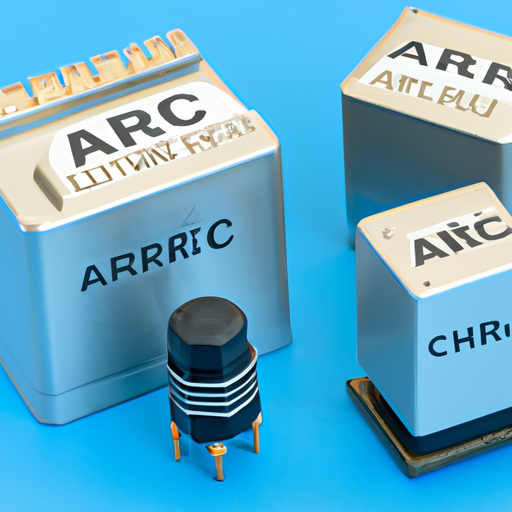
Application Development in Current Sense Transformers for CFR-50JB-52-1K5: Key Technologies and Success StoriesCurrent Sense Transformers (CSTs), such as the CFR-50JB-52-1K5, play a pivotal role in modern power electronics and energy management systems. Their ability to accurately sense current makes them indispensable in a variety of applications, including power supplies, motor drives, and renewable energy systems. Below is an overview of the key technologies that enhance the performance of CSTs and notable success stories that illustrate their impact across different industries.
Key Technologies1. Magnetic Core Materials2. Winding Techniques3. Integration with Digital Signal Processing (DSP)4. Temperature Compensation5. Isolation Techniques6. Miniaturization7. Smart Sensors1. Electric Vehicle (EV) Applications2. Renewable Energy Systems3. Industrial Automation4. Consumer Electronics5. Smart Grid Technologies Success Stories ConclusionThe application development of Current Sense Transformers like the CFR-50JB-52-1K5 is propelled by advancements in materials, design techniques, and integration with digital technologies. The success stories across various industries underscore the versatility and critical importance of CSTs in modern electronic systems. As technology continues to evolve, the role of CSTs in enhancing performance, efficiency, and safety in electrical systems will only become more significant, paving the way for innovative applications in the future.

Overview of CFR-50JB-52-1R5 Audio TransformersThe CFR-50JB-52-1R5 is a specialized audio transformer designed for a wide range of audio applications, including professional audio equipment, musical instruments, and consumer electronics. Audio transformers are essential components in audio systems, serving multiple functions such as isolating signals, matching impedance, and transforming audio signals to ensure optimal performance.
Core Functional Technology of Audio Transformers1. Impedance Matching 2. Signal Isolation 3. Voltage Transformation 4. Frequency Response 5. Low Distortion 1. Microphone Preamplifiers 2. Guitar Amplifiers 3. Mixing Consoles 4. Home Audio Systems 5. Broadcasting Equipment Application Development Cases ConclusionThe CFR-50JB-52-1R5 audio transformer exemplifies the essential role that audio transformers play in various audio applications. By providing impedance matching, signal isolation, voltage transformation, and maintaining low distortion, these transformers are integral to achieving high-quality audio performance. Their applications span across professional audio, musical instruments, consumer electronics, and broadcasting, making them a vital component in the audio industry. Future DevelopmentFor further development, engineers and designers can explore advancements in materials and design techniques to enhance the performance of audio transformers. Innovations such as improved core materials, advanced winding techniques, and optimized geometries can lead to transformers that meet the evolving demands of modern audio technology. Additionally, integrating digital signal processing (DSP) with traditional transformer technology may open new avenues for enhancing audio fidelity and system performance.

Application Development in Accessories for LT1213CS8: Key Technologies and Success StoriesThe LT1213CS8, a mobile impact crusher from Metso Outotec, is a versatile machine widely used in construction and recycling. The development of accessories and applications for this equipment is crucial for enhancing its performance, efficiency, and safety. Below, we explore key technologies and notable success stories that illustrate the impact of these innovations.
Key Technologies1. Telematics and IoT Integration2. Advanced Control Systems3. Wearable Technology4. Material Handling Accessories5. Power Management Solutions1. Recycling Operations2. Construction Projects3. Mining Applications4. Safety Innovations Success Stories ConclusionThe development of accessories and applications for the LT1213CS8 is significantly influenced by advancements in technology, focusing on enhancing efficiency, safety, and sustainability. By leveraging telematics, automation, and innovative material handling solutions, companies can optimize the performance of their equipment, leading to successful outcomes across various industries. As technology continues to evolve, further innovations are anticipated, promising to enhance the capabilities of mobile impact crushers like the LT1213CS8 even more.
Core Functional Technology of Joystick Potentiometers1. Potentiometric Sensing2. Multi-Axis Control3. Durability and Reliability4. Compact Design5. Analog Output1. Gaming Controllers2. Robotics3. Industrial Machinery4. Assistive Technology5. Simulation and Training Application Development Cases ConclusionJoystick potentiometers, exemplified by the CFR-50JB-52-1M3 model, play a vital role in a diverse array of applications, offering precise control, durability, and versatility. Their ability to provide multi-axis input and analog output makes them ideal for gaming, robotics, industrial machinery, assistive technology, and simulation. As technology continues to advance, the development and application of joystick potentiometers are expected to expand, leading to innovative solutions and enhanced user experiences across various fields.

Trimmer Potentiometers: Core Functional Technology and ApplicationsTrimmer potentiometers, such as the CFR-50JB-52-1K3, are compact, adjustable resistors that play a vital role in fine-tuning electronic circuits. Their ability to provide precise resistance adjustments makes them essential in a wide range of applications. Below, we delve into the core functional technologies, relevant articles, and application development cases that showcase the effectiveness of trimmer potentiometers.
Core Functional Technology1. Basic Operation2. Types of Trimmer Potentiometers3. Adjustment Mechanism4. Applications1. "Understanding Potentiometers: Types and Applications"2. "The Role of Trimmer Potentiometers in Circuit Design"3. "Calibration Techniques Using Trimmer Potentiometers"1. Audio Equipment Calibration2. Sensor Calibration in Industrial Applications3. Power Supply Voltage Adjustment4. Consumer Electronics Articles on Trimmer Potentiometers Application Development Cases ConclusionTrimmer potentiometers, exemplified by the CFR-50JB-52-1K3, are integral components in the design and functionality of electronic devices. Their ability to provide precise adjustments enhances the performance of various applications, from audio equipment to industrial sensors. A thorough understanding of their technology and applications can lead to improved design choices and enhanced product performance, making trimmer potentiometers indispensable in modern electronics.
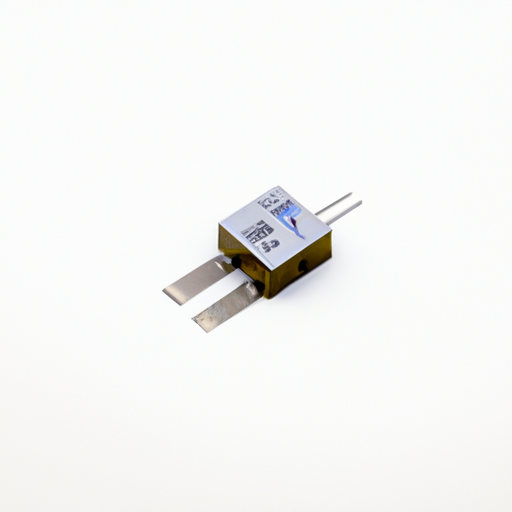
CFR-25JB-52-1M2 Adjustable Inductors: Core Functional Technology and Application DevelopmentIntroduction to Adjustable Inductors
Adjustable inductors, such as the CFR-25JB-52-1M2, are critical components in a wide range of electronic circuits, enabling designers to fine-tune inductance values to meet specific requirements. These inductors are particularly valuable in applications where variable inductance is essential for optimal performance, including RF circuits, filters, and oscillators. Core Functional Technology1. Variable Inductance Mechanism2. Material Composition3. Tuning Range4. Temperature Stability5. Compact Design1. RF Circuit Design2. Filter Design3. Power Supply Regulation4. Signal Processing5. Educational and Research Applications Application Development Cases ConclusionThe CFR-25JB-52-1M2 adjustable inductor exemplifies the significance of variable inductance in modern electronic design. Its core functional technologies, including variable inductance mechanisms, high-quality material composition, and temperature stability, make it a valuable component across various applications. From RF circuit design to power supply regulation, the versatility of adjustable inductors continues to drive innovation in electronic systems. As technology advances, the role of adjustable inductors is expected to expand, further enhancing their importance in the electronics industry.
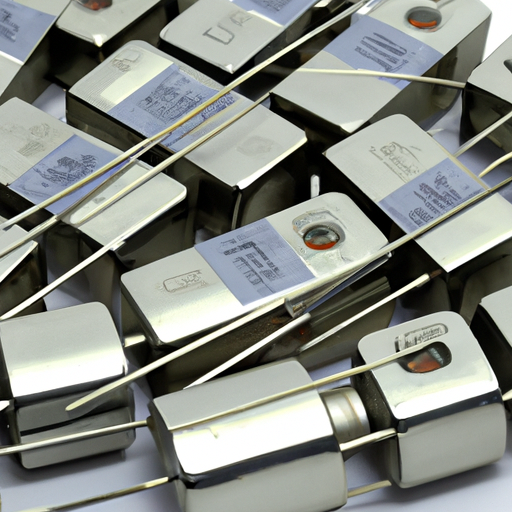
Application Development in Aluminum-Polymer Capacitors for CFR-25JB-52-1K2: Key Technologies and Success StoriesAluminum-polymer capacitors, such as the CFR-25JB-52-1K2, are increasingly favored in various electronic applications due to their advantageous characteristics, including high capacitance, low equivalent series resistance (ESR), and excellent thermal stability. Below, we explore the key technologies that underpin their development and highlight notable success stories across different industries.
Key Technologies1. Electrolyte Formulation2. Anode and Cathode Materials3. Manufacturing Techniques4. Thermal Management5. Simulation and Modeling6. Integration with Other Components1. Consumer Electronics2. Electric Vehicles (EVs)3. Renewable Energy Systems4. Industrial Automation5. Telecommunications Success Stories ConclusionThe development and application of aluminum-polymer capacitors like the CFR-25JB-52-1K2 are driven by significant advancements in materials science, manufacturing techniques, and integration capabilities. Their success across diverse industries underscores their versatility and critical role in modern electronic systems. As technology continues to evolve, further innovations in this field are anticipated, leading to even more efficient and reliable capacitor solutions that will support the next generation of electronic devices and systems.
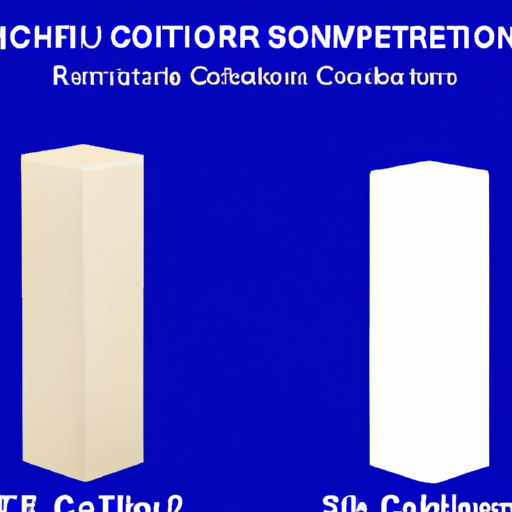
Overview of Silicon Capacitors: CFR-50JB-52-1K2Silicon capacitors, exemplified by the CFR-50JB-52-1K2 model, represent a transformative leap in capacitor technology, particularly suited for applications demanding high reliability, compactness, and superior performance. This overview highlights the core functional technologies and application development cases that underscore the effectiveness of silicon capacitors.
Core Functional Technologies1. Silicon-Based Dielectric Material2. Miniaturization3. High Capacitance Density4. Integration with Integrated Circuits (ICs)5. Temperature Stability6. Low Leakage Current1. Consumer Electronics2. Automotive Applications3. Telecommunications4. Medical Devices5. Industrial Automation6. Renewable Energy Systems Application Development Cases ConclusionSilicon capacitors, such as the CFR-50JB-52-1K2, are leading the way in capacitor technology, offering significant advantages in size, performance, and reliability. Their diverse applications across various industries—from consumer electronics to automotive and renewable energy—demonstrate their versatility and effectiveness in meeting the evolving demands of modern electronic systems. As technology advances, the role of silicon capacitors is expected to expand, driving further innovations in electronic design and application development.
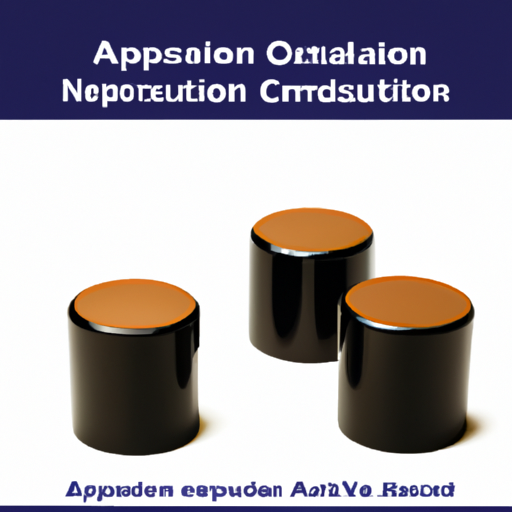
Application Development in Niobium Oxide Capacitors for CFR-50JB-52-1R2: Key Technologies and Success StoriesNiobium oxide capacitors, particularly exemplified by the CFR-50JB-52-1R2 model, represent a significant leap in capacitor technology. Their unique properties make them suitable for a wide range of applications across various industries. Below is an overview of the key technologies that underpin their development and notable success stories that highlight their application.
Key Technologies1. High Dielectric Constant 2. Temperature Stability 3. Low Leakage Current 4. High Voltage Ratings 5. Environmental Stability 6. Advanced Manufacturing Techniques 1. Aerospace Applications 2. Electric Vehicles (EVs) 3. Renewable Energy Systems 4. Consumer Electronics 5. Telecommunications Success Stories ConclusionThe development of niobium oxide capacitors, such as the CFR-50JB-52-1R2, highlights the potential of advanced materials to enhance capacitor performance across various industries. Their unique properties, combined with ongoing advancements in manufacturing and application techniques, position them as a key technology in the future of electronic components. As industries continue to demand higher efficiency and reliability, niobium oxide capacitors are poised to play an increasingly important role in the development of next-generation electronic systems, paving the way for innovations in energy management, telecommunications, and beyond.



